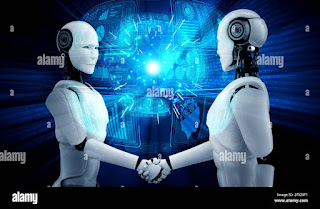HOW ROBOTS THINK AND ANALYZE HUMAN INSTRUCTION
Robots are machines that are capable of carrying out tasks autonomously or with minimal human intervention. They are designed to perform specific functions, such as assembling, welding, painting, and more. Robots use a combination of sensors, actuators, and control systems to carry out their tasks.
The core of a robot is its control system. This system is responsible for processing information from the sensors and determining the appropriate actions to be taken by the actuators. The control system consists of software that is programmed to carry out specific tasks and hardware components that interface with the sensors and actuators.
Robots use sensors to gather information about their environment and the tasks they are performing. Some common sensors used in robots include cameras, microphones, and touch sensors. These sensors provide information about the robot's surroundings, such as the location of objects and their shapes and colors.
Once the robot has gathered information from its sensors, it uses this information to make decisions about what actions to take. This is done by the control system, which processes the information and uses algorithms to determine the best course of action. The control system then sends signals to the actuators, which carry out the actions.
Robots can be programmed to perform a wide range of tasks. For example, robots can be programmed to assemble products, weld parts together, paint surfaces, and more. The tasks that robots are capable of performing are limited only by the imagination of their programmers.
In order to perform tasks that are similar to those performed by humans, robots must be able to understand human tasks. This requires them to have a basic understanding of human language and the way that people interact with each other.
One way that robots can understand human tasks is by using Natural Language Processing (NLP) techniques. NLP allows robots to process and understand human language, which enables them to respond to verbal commands and understand the meaning of written text.
Another way that robots can understand human tasks is by using computer vision techniques. Computer vision allows robots to process and understand visual information, such as images and video. This enables them to recognize objects and people, track their movements, and determine their poses and gestures.
In order for robots to be effective at understanding human tasks, they must be trained. This is done by showing them examples of tasks and allowing them to practice performing those tasks. The robots can then use the information they have learned to generalize to new tasks and perform them effectively.
In conclusion, robots are machines that are designed to perform specific tasks and are capable of understanding human tasks. They use a combination of sensors, actuators, and control systems to carry out their tasks, and they can be trained to perform new tasks. With advancements in technology, robots are becoming increasingly capable of performing tasks that were once only possible for humans to perform, and they are changing the way we live and work.




0 Comments